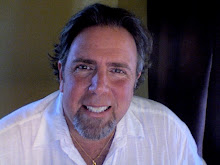 The problem with mutual funds, more specifically with actively managed funds is the available basket of stocks to purchase is much smaller than you might imagine. While there are thousands of companies available to buy on any one day, the majority of those companies are too small to buy in a large enough quantity and be able to do so without forcing the price of that equity higher.
The problem with mutual funds, more specifically with actively managed funds is the available basket of stocks to purchase is much smaller than you might imagine. While there are thousands of companies available to buy on any one day, the majority of those companies are too small to buy in a large enough quantity and be able to do so without forcing the price of that equity higher. This has to do with liquidity. If there are not enough shares available, a fund manager's purchase might actually increase the stock price simply because of interest in the equity. So, by default, many fund managers who look for price stability must by much larger companies. This increases the chance that your portfolio, the one with several mutual funds may actually be invested in the same stocks. This defeats the diversification opportunity and makes all of the funds you own susceptible to the same market changes.
There are some simple rules for you to follow in order to diversify your portfolio.
The easiest way to do this is to purchase funds that invest across a variety of asset classes. To cover all of the available asset classes may create diversity, it is best to focus on just three or four and stick with them. Aside from large-cap stocks, small caps and international stock funds spread the equity risk. Mid-cap funds also do this as well. But during tough economic times, the line between mid-cap and large-cap can often blur, where a large-cap might be beaten down enough that it actually qualifies as a potential purchase in the mid-cap range.
Inside a a defined contribution plan such as a 401(k) sponsored by your employer, numerous fund families are not always offered. By when they are, you should take advantage of the opportunity. In numerous instances, the cost of research is often prohibitively high. Because of that, research may be shared among fund managers within the same family increasing the chances that your fund will carry similar, if not exact holdings in different funds.
Mutual fund managers all come with a different set of investing ideas that need to form fit within the fund's charter. Once again, look for fund managers that offer you some track record, good benchmark comparisons for their performance and tenure.Use different fund companies.
Avoid filling your portfolio with winners. This type of investor behavior is often called herding and is more common than you think. All markets sectors do not perform the same at any one given time. Spread the risk among growth and value, domestic and international and large-cap and small cap funds. This will require a little due diligence on your part. In other words, open those statements. Compare the holdings side-by-side and consider the overlapping investments carefully.
I often suggest that S&P 500 index funds be owned outside a retirement account (better to pay those taxes now while the tax break is still good and because these funds do not have much in the way of turnover or high fees), freeing those investments for increased diversity and better tax-deferment. It will also allow you exposure to a little more risk (which is needed for sustained growth) and better fund diversification (across all the available asset classes).







